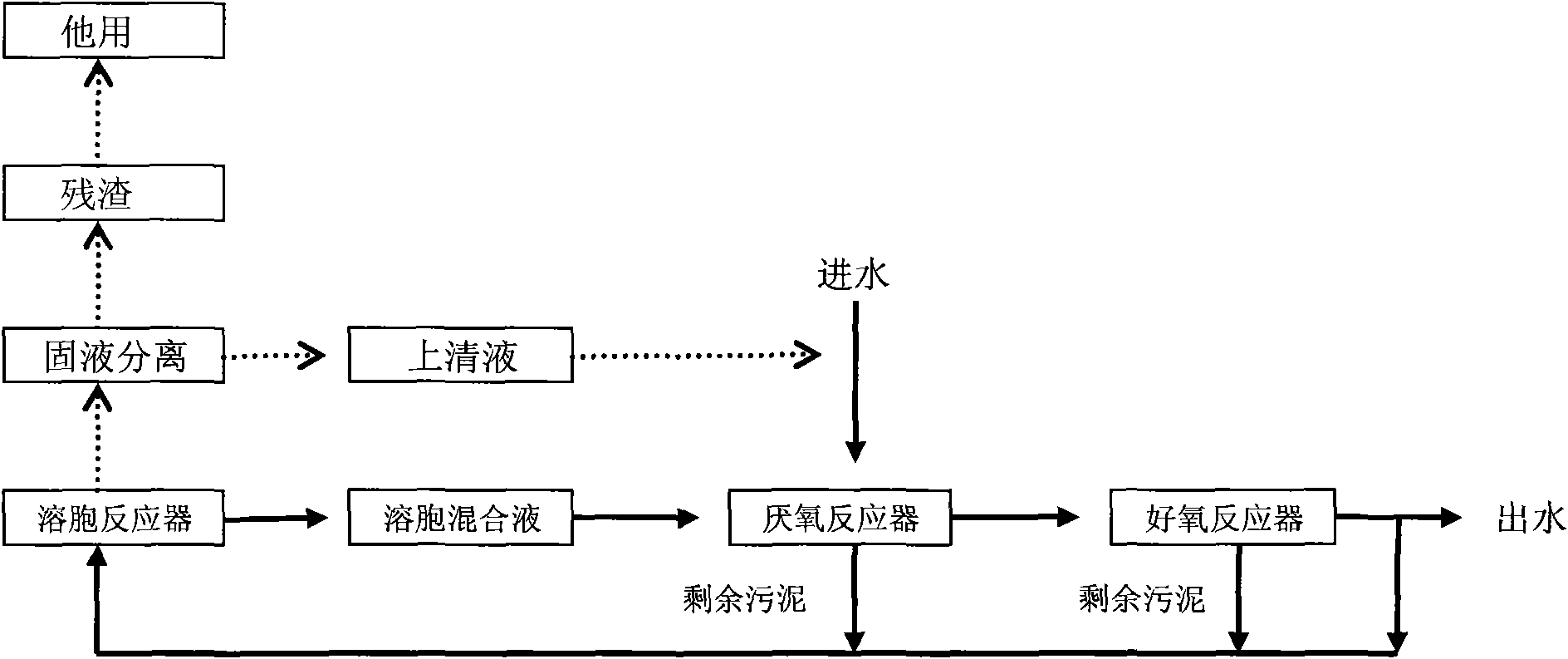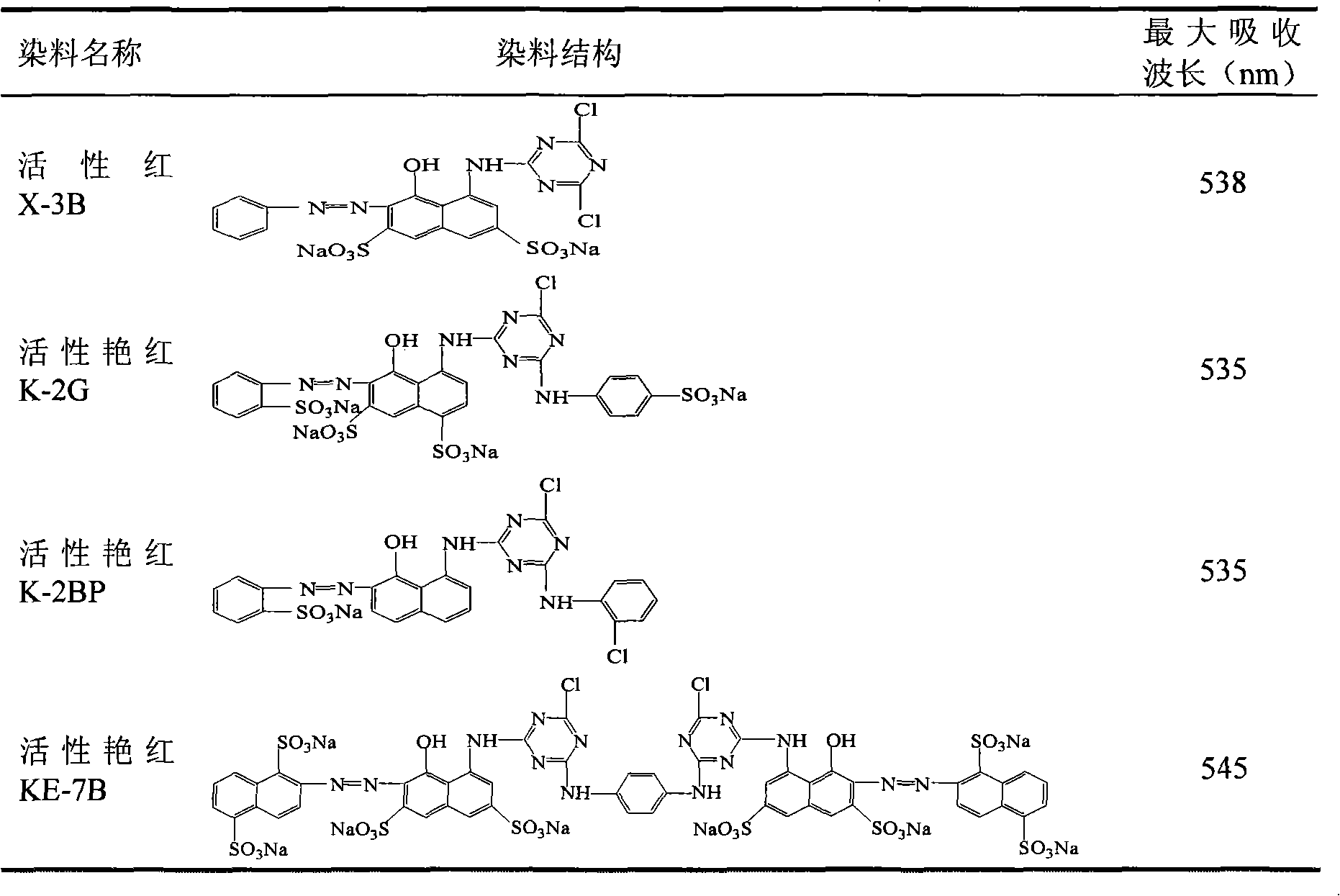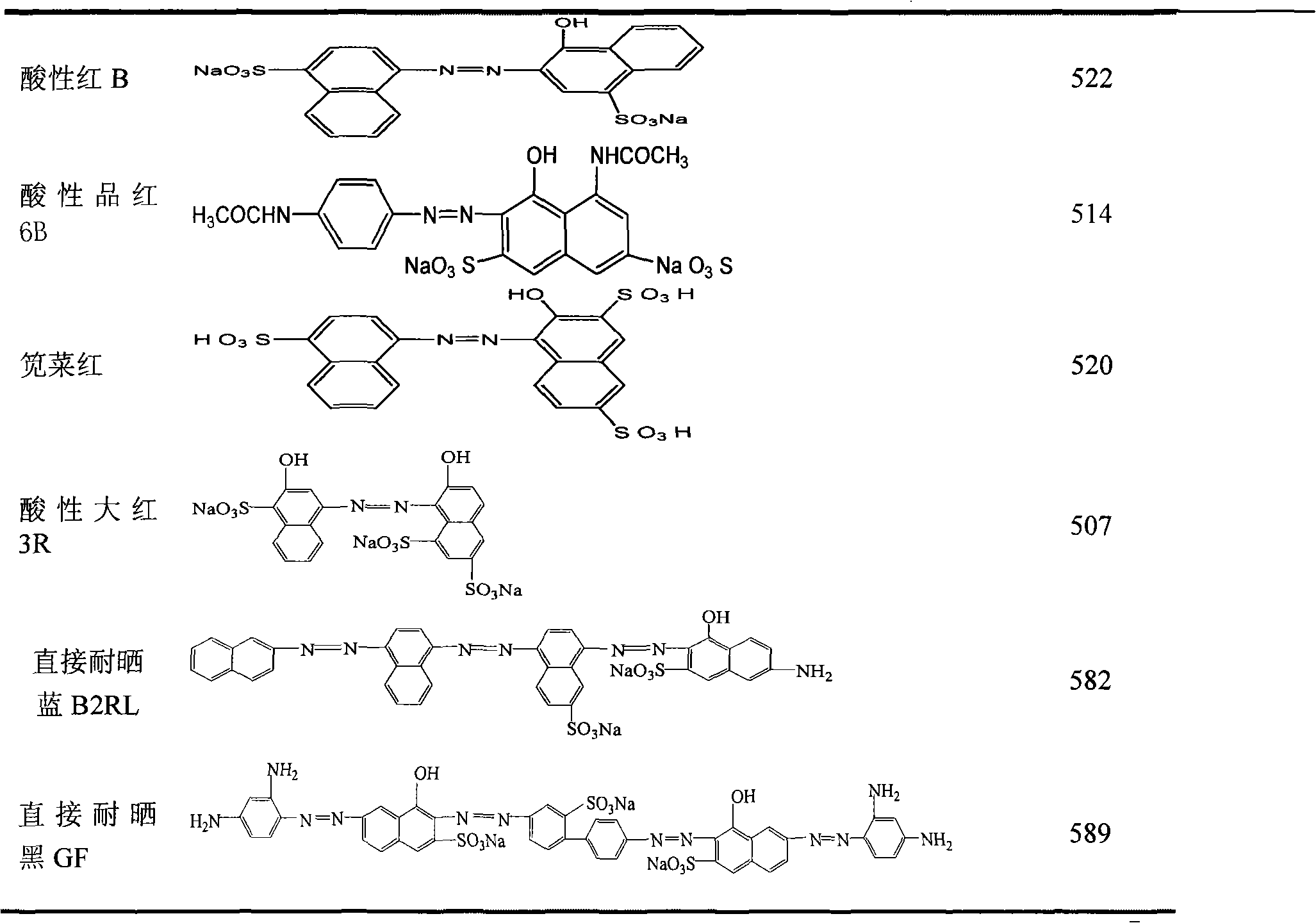Method for strengthening biological treatment of organic wastewater difficult to degrade
A technology of organic wastewater and biological treatment, applied in the field of environmental engineering, can solve the problems that restrict the reasonable treatment and utilization of sludge, and achieve the effects of improving biological treatment efficiency, easy operation, and reducing microbial exogenous nutrients
- Summary
- Abstract
- Description
- Claims
- Application Information
AI Technical Summary
Problems solved by technology
Method used
Image
Examples
Embodiment 1
[0023] Example 1: Enhancing biological treatment of azo dye wastewater with excess sludge lysed mixed solution
[0024] [1] Establishment of A / O biological treatment process for azo dye wastewater
[0025] The influent is the simulated wastewater of azo dyes, and its composition is 200 mg / L of azo dyes listed in Table 1, 500 mg / L of glucose, (NH 4 ) 2 SO 4 、Na 2 HPO 4 、KH 2 PO 4 , trace CaCl 2 , MgSO 4 , FeCl 3 , COD:N:P=100:5:1, pH value is 7.0.
[0026] The inoculated microorganisms in the anaerobic and aerobic bioreactors were activated sludge, and the concentration of the inoculated microorganisms in the reactor was 5g / L.
[0027] Sludge acclimatization is carried out in batch mode. Dilute the original influent 4 times as the initial influent. Whenever the COD removal rate of the influent reaches 85% or more, gradually increase the concentration of azo dyes in the influent, and enter the next round of domestication until the domestication is completed.
[0028]...
Embodiment 2
[0041] Example 2: Residual sludge lysed mixed solution strengthens trinitrotoluene (TNT) wastewater biological treatment
[0042] [1] Establish TNT wastewater A / O biological treatment process
[0043] The influent is TNT simulated wastewater, and its composition is TNT 80mg / L, glucose 300mg / L, (NH 4 ) 2 SO 4、Na 2 HPO 4 、KH 2 PO 4 , trace CaCl 2 , MgSO 4 , FeCl 3 , COD:N:P=100:5:1, pH value is 7.0.
[0044] The inoculated microorganisms in the anaerobic and aerobic bioreactors were activated sludge, and the concentration of the inoculated microorganisms in the reactor was 5g / L.
[0045] Sludge acclimatization is carried out in batch mode. Dilute the original influent 3 times as the initial influent. Whenever the COD removal rate of the influent reaches more than 85%, gradually increase the TNT concentration in the influent, and enter the next round of domestication until the domestication is completed.
[0046] After the sludge acclimatization is completed, the reac...
Embodiment 3
[0054] Embodiment 3: Residual sludge lysate mixed solution strengthens pentachlorophenol wastewater biological treatment
[0055] [1] Establishment of pentachlorophenol wastewater A / O biological treatment process
[0056] The influent is pentachlorophenol simulated wastewater, which consists of pentachlorophenol 50mg / L, glucose 300mg / L, (NH 4 ) 2 SO 4 、Na 2 HPO 4 、KH 2 PO 4 , trace CaCl 2 , MgSO 4 , FeCl 3 , COD:N:P=100:5:1, pH value is 7.0.
[0057] The inoculated microorganisms in the anaerobic and aerobic bioreactors were activated sludge, and the concentration of the inoculated microorganisms in the reactor was 5g / L.
[0058] Sludge acclimatization is carried out in batch mode. Dilute the original influent 3 times as the initial influent. Whenever the influent COD removal rate reaches 85% or more, gradually increase the concentration of pentachlorophenol in the influent, and enter the next round of domestication until the domestication is completed.
[0059] Af...
PUM
 Login to View More
Login to View More Abstract
Description
Claims
Application Information
 Login to View More
Login to View More - R&D
- Intellectual Property
- Life Sciences
- Materials
- Tech Scout
- Unparalleled Data Quality
- Higher Quality Content
- 60% Fewer Hallucinations
Browse by: Latest US Patents, China's latest patents, Technical Efficacy Thesaurus, Application Domain, Technology Topic, Popular Technical Reports.
© 2025 PatSnap. All rights reserved.Legal|Privacy policy|Modern Slavery Act Transparency Statement|Sitemap|About US| Contact US: help@patsnap.com



